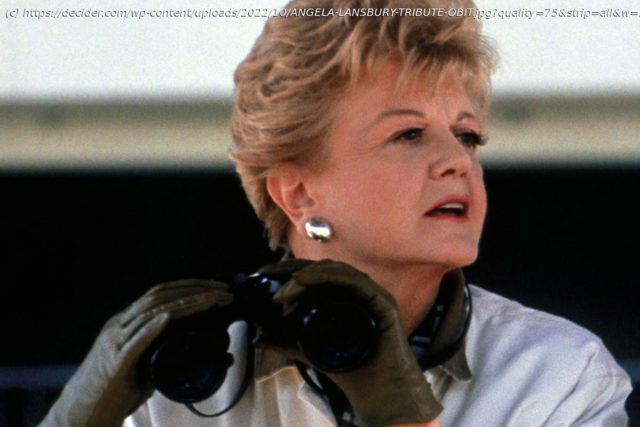Did Angela Lansbury die? Sadly, yes; Angela Lansbury is dead at 96. She always showed up, always gave her all, always entertained, and was never precious or pretentious about anything.
After a long career that was as varied as it was distinguished — and that had not, as it happened, even come to an end — Angela Lansbury died today at the age of 96.
Now 96 is, under most circumstances, a highly desirable old age. And yet I, and many others, shuddered to learn of Dame Angela’s death. She’d been an awe-inspiring presence in so many lives that we WANTED her to live forever, even if we could not expect her to. Was she a great trouper, or the greatest trouper?
She was born in 1925. Her mom was an Irish actress and her dad was a leftist timber merchant. Her dad’s death when she was nine compelled her to escape into worlds where she created, and acted out, the characters in it. In the midst of the Blitz, she traveled with her mother to North America (her mom had a job looking after children being evacuated from Great Britain to Canada) and started accruing stage experience. Her mother was socially well-connected, and at a party she hosted, Angela was introduced to the Gaslight screenwriter John Van Druten, who suggested to director George Cukor that she would do well as Nancy, the scheming maid in an upcoming photo play he was penning.
So Lansbury, then not yet twenty, started her film career on the top floor: major director, major studio (MGM), major cast (Ingrid Bergman and Charles Boyer were the leads). She did NOT squander the opportunity. Her work in 1944’s Gaslight was stellar. First off, she was what Austin Powers would call “dead sexy.” Second, the swagger she brought to her performance complemented the increasing helplessness portrayed by Bergman’s Paula, but there was never any question of upstaging the lead actress. (Not for nothing was she nominated for Best Supporting Actress in, let us not forget, her screen debut.)
George Cukor was one of many who felt that MGM, upon signing her to a contract that lasted through 1952, didn’t take advantage of Lansbury’s particular talents. Her filmography from that period is motley but also filled with delights if you look at it from a certain angle. Her work as the temporary Dorian Gray fiancée Sybil Vane in the florid 1945 The Picture of Dorian Gray can’t be faulted, nor can her performance as a mean-girl-redeemed opposite Judy Garland in 1946’s The Harvey Girls. And 1949’s Samson and Delilah is a Cecil B. DeMille picture, with all the hoo-hah that implies and/or promises. While not considered top-flight at the time, these movies now serve nicely as little time capsules showing what the simple folk did for entertainment back in the day. (That’s a Camelot reference, people; I’m not really calling the moviegoing masses of the past “simple folk.”)
After going freelance, she never quite graduated to leading lady, but she worked with directors of serious credibility. She played Minnie Littlejohn, the long-suffering mistress of Orson Welles’ Will Varner, in The Long Hot Summer, an odd Faulkner-Tennessee Williams mashup helmed by Martin Ritt. She also appeared in Vincente Minnelli’s slight but agreeable The Reluctant Debutante, to pleasant effect.






